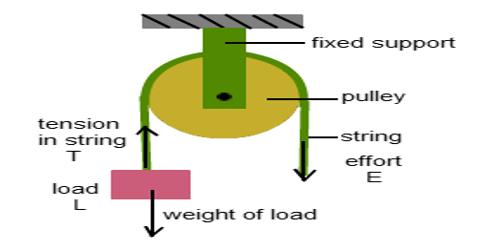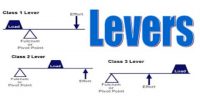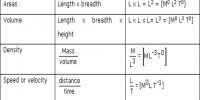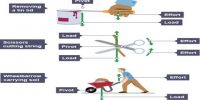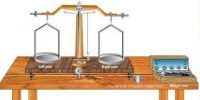Pulley is one kind of simple machine. There is grooved small wheel (dish) from which a rope is hanged from two sides. The pulley rotates round an axis-rod which is connected to a fixed block. Pulley is generally used to lift heavy bodies or to collect water from the well.
Pulley may be static or dynamic. In a static pulley the block remains at rest and only the disc rotates. On the other hand in a dynamic pulley the block lb not at rest, it rotates with the rotation of the pulley.
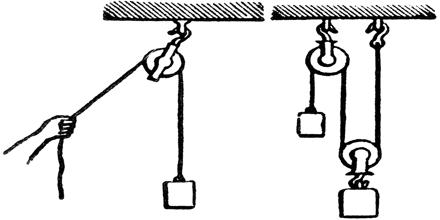
Usually for hoisting flags we use static pulley. In this case only the pulley rotates as soon as the rope is pulled. In this case, the flag will be hoisted as high as much the rope is pulled down. As a result, although mechanical efficiency is not available but the direction of force is changed.
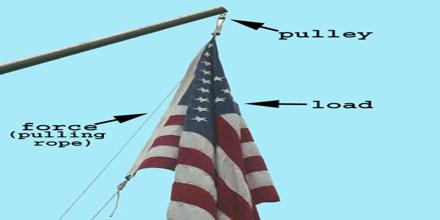
As the pulley in a dynamic pulley rotates itself, mechanical efficiency is available in it. But in this case the rope is to be pulled twice the distance of the height in which the body is to be lifted. Moreover, to get this efficiency the static and dynamic pulley is used in combination. By using this technique the direction of force can be changed to mail the efficiency. The mechanical efficiency of dynamic pulley is two times greater than static pulley.
Mechanical efficiency of pulley = [the length travelled by the force/the length travelled by the load]
